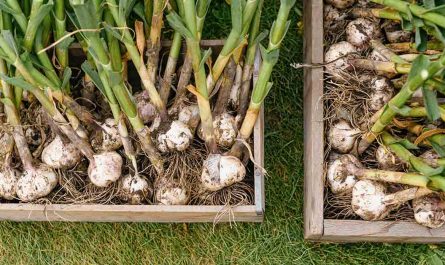In a remarkable fusion of nature and science, researchers at Worcester Polytechnic Institute (WPI) have transformed spinach leaves into functioning human heart tissue, a breakthrough reported in a 2017 Biomaterials study. By stripping away plant cells and seeding the remaining cellulose scaffold with human heart cells, they created tissue that mimics cardiac muscle, complete with a vascular network resembling human capillaries. This innovative approach tackles a key challenge in regenerative medicine—building viable blood vessels to deliver oxygen and nutrients—and opens new possibilities for repairing damaged hearts and beyond, using plants as sustainable scaffolds.
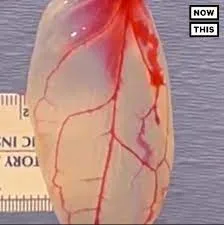
Turning Leaves into Lifelines
The process begins with a simple spinach leaf, chosen for its intricate vein structure, which mirrors the branching capillaries of human tissue. Using a detergent-based technique called decellularization, researchers remove the leaf’s plant cells, leaving a translucent cellulose framework—biocompatible, strong, and flexible. This scaffold retains the leaf’s natural vascular channels, capable of carrying fluids much like blood vessels. Human pluripotent stem cells, seeded onto the scaffold, adhere and grow, forming heart muscle tissue that contracts and functions like native cardiac tissue. In experiments, red dye pumped through the veins mimicked blood flow, proving the scaffold’s potential to support nutrient delivery.
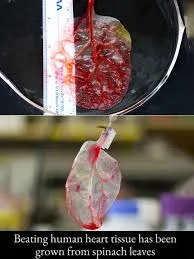
Led by Glenn Gaudette and Joshua Gershlak at WPI, the team demonstrated that the spinach-derived tissue could sustain human heart cells for up to 21 days, a critical step toward creating viable grafts. The study, published in Biomaterials (Volume 103, 2017), also tested other plants like parsley and peanut hairy roots, suggesting a range of natural scaffolds for various tissues.
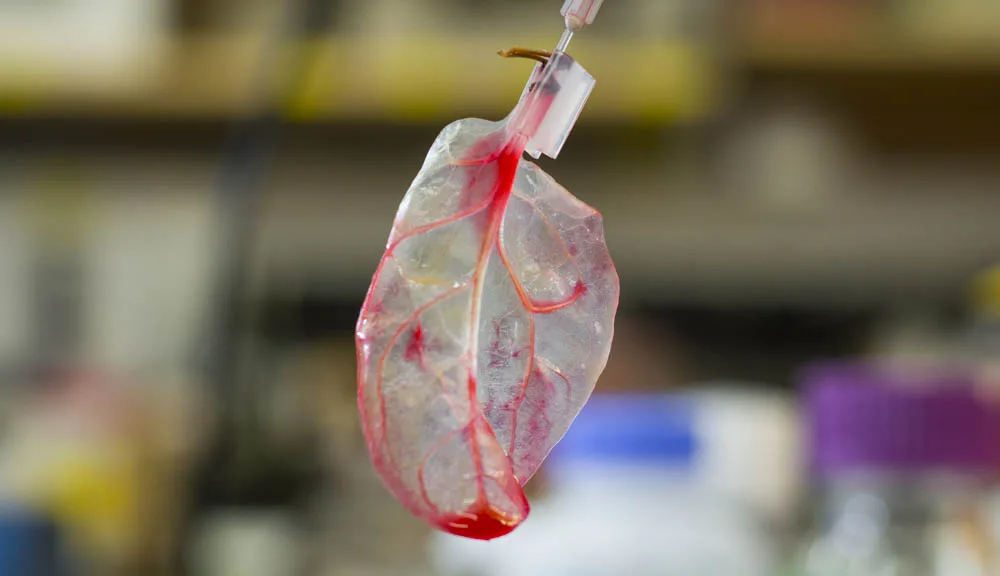
A Solution for Heart Repair
Heart disease, a leading cause of death globally, often leaves patients with damaged cardiac tissue after heart attacks, as the heart cannot regenerate on its own. Current tissue engineering struggles to create vascularized grafts that integrate with the body. The spinach leaf’s natural vasculature offers a cost-effective, scalable solution, potentially enabling lab-grown heart tissue to restore function in damaged hearts. Unlike synthetic scaffolds, which can cost thousands and require complex fabrication, spinach leaves are abundant and inexpensive, with cellulose already proven safe in medical implants.
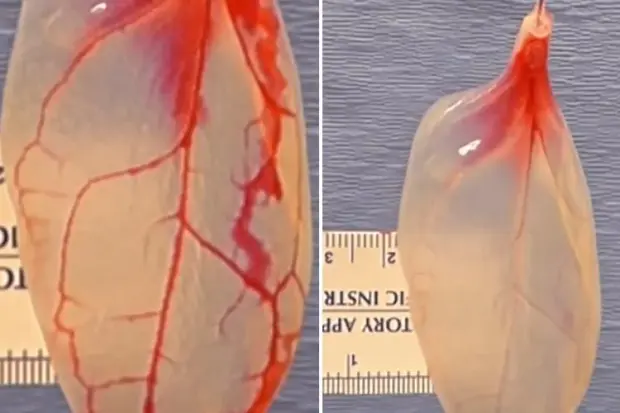
The technique’s potential extends beyond hearts. The team envisions using decellularized plant structures—like celery stalks for blood vessels or bamboo for bone—to create scaffolds for cartilage, liver, or skin regeneration. This could reduce reliance on donor organs, with over 100,000 patients on U.S. transplant waiting lists in 2025, and address challenges like immune rejection.
Challenges and Future Horizons
While promising, the technology is in early stages. Scaling up to create thicker, multilayered heart tissue remains a hurdle, as does ensuring long-term integration with human systems. Regulatory approval and clinical trials could take years, with researchers estimating a decade or more before patient applications. Environmental factors, like ensuring sterile plant scaffolds, also need refinement to prevent contamination.

The approach draws inspiration from nature’s efficiency, much like the Dahomey Amazons’ use of cornrows for covert communication. Just as the Amazons repurposed a cultural practice for survival, scientists are repurposing plant structures for medical innovation, highlighting creativity in adversity.

A Greener Future for Medicine
The spinach leaf breakthrough redefines regenerative medicine, blending botanical ingenuity with human biology. By harnessing nature’s ready-made scaffolds, this method offers a sustainable, affordable path to repair damaged organs, potentially transforming lives. As research progresses, the dream of growing heart tissue from a grocery store staple inches closer, proving that even a humble spinach leaf can hold the seeds of a medical revolution.
